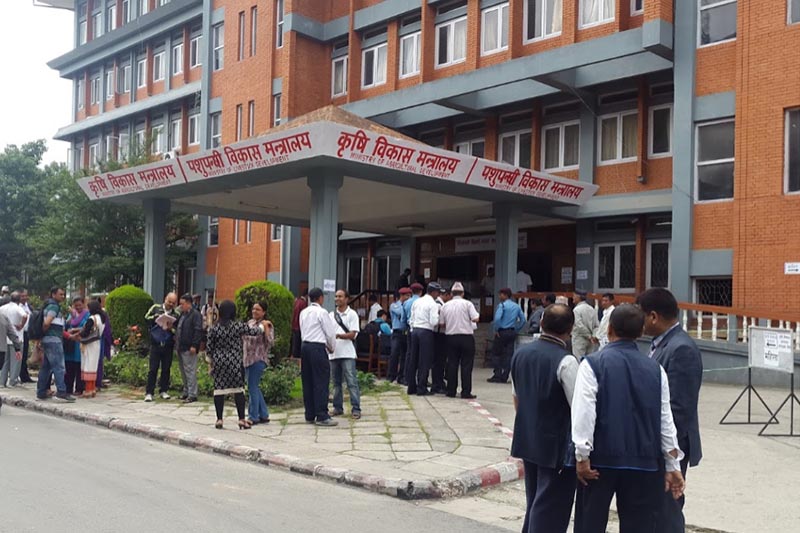MoALD forms taskforce to prevent possible impact of locusts in the country
KATHMANDU, MAY 26
The Ministry of Agriculture and Livestock Development (MoALD) has formed a taskforce to prevent possible impact of locusts on the agriculture sector of the country. It has been reported that the locust outbreak has already had a severe effect in India and the insect is likely to enter Nepal.
A meeting chaired by Agriculture Secretary Rajendra Prasad Bhari formed the taskforce today which will be coordinated by Sahadev Humagain, chief of Plant Quarantine and Pesticide Management Centre.
“The migration pattern of the locusts can be traced back to northern Africa. The swarm of insects has travelled via Sudan, Iran, Pakistan and then to Rajasthan in India," said Humagain.
"The insects are gradually moving towards Delhi, so there is a high chance the swarm could arrive in Nepal too," he added.
According to him, the taskforce has been directed to study the possibility of locusts entering the country and to recommend possible measures to control the outbreak. “We will be studying the nature and migration trend of these insects and the measures that are being used in India and other countries to control them,” Humagain said.
“Though the meeting has not set any deadline, we don’t have much time so we will submit our report to the ministry on the possible measures that could be adopted to manage this outbreak if it enters the country within four days,” he added.
As per Humagain, locusts were detected in Itahari last year, however they did not cause any major damage.
Prior to this, the insects were seen in Nepal way back in 1962. Back then, the swarm had attacked crops in Kathmandu, Nuwakot, Dhading and a few other districts damaging a large number of crops.
“However, we don’t have exact data of the damages.
Since then the insects have not been seen in Nepal," he informed.
"The damage that the insects have caused in other countries is alarming and we have to be prepared. Although this is not new to the Nepali agriculture sector, it is completely new for the present generation,”
Humagain added.
He further said that the locust outbreak is difficult to control as it flies in a large group and it consumes all kinds of crops, vegetables, fruits and grass. “The hand spray being used in Nepal will not be effective on this insect,” he added. Locusts that belong to the grasshopper species are also called desert locusts.
According to Food and Agriculture Orgnisation (FAO), an adult locust can consume roughly its own weight in fresh food per day that is about two grams every day. A one square kilometre swarm contains about 40 million locusts, which eat the same amount of food in one day as about 35,000 people. This is based on a person eating an average of 2.3 kg of food per day.
“It is even more challenging as there is no exact solution to control this insect completely. We can only minimise the risk,” Humagain said, adding, “Currently India is using fire brigades to spray chemicals to control the insect.”
As per FAO, organphosphate chemicals have to be applied via vehicle-mounted and aerial sprayers to control these insects. The MoALD believes that this swarm of locusts could enter Nepal from the far-western region. So the ministry has also directed the provincial and local governments today to stay alert, spread awareness and use precaution to prevent these insects from causing major damage to agriculture produce.
A version of this article appears in e-paper on May 27, 2020, of The Himalayan Times.






